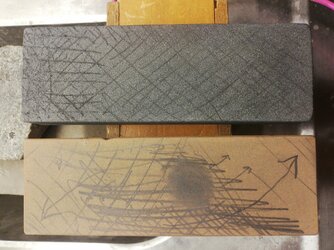First thing I want to say is that I live in a flat.
Second is, I no longer have in possession a reference-flatness thingy and it bothers me, so Im gonna do 3 stone method-thingy with some hard stones and loose grit and:
X/ Rest from my work only in the grave.
X/Take notes
X/ get total flatness
X/and true this decent steel ruler I've got to kingdom gone, and perhaps diy this piece of steel into something that's at least *alot* straighter than the straightness of like most things around I guess? It would be nice if so. Improve something that's already at home, and and not just buy another thing. Then keep doing 3 stone flattening method on everything I own for a while longer and at least something pretty feckn straight, kinda.
I have the time, but not the money. But I believe I can do it.
I could just buy one, but no.
A decent goal I think.
Second is, I no longer have in possession a reference-flatness thingy and it bothers me, so Im gonna do 3 stone method-thingy with some hard stones and loose grit and:
X/ Rest from my work only in the grave.
X/Take notes
X/ get total flatness
X/and true this decent steel ruler I've got to kingdom gone, and perhaps diy this piece of steel into something that's at least *alot* straighter than the straightness of like most things around I guess? It would be nice if so. Improve something that's already at home, and and not just buy another thing. Then keep doing 3 stone flattening method on everything I own for a while longer and at least something pretty feckn straight, kinda.
I have the time, but not the money. But I believe I can do it.
I could just buy one, but no.
A decent goal I think.


